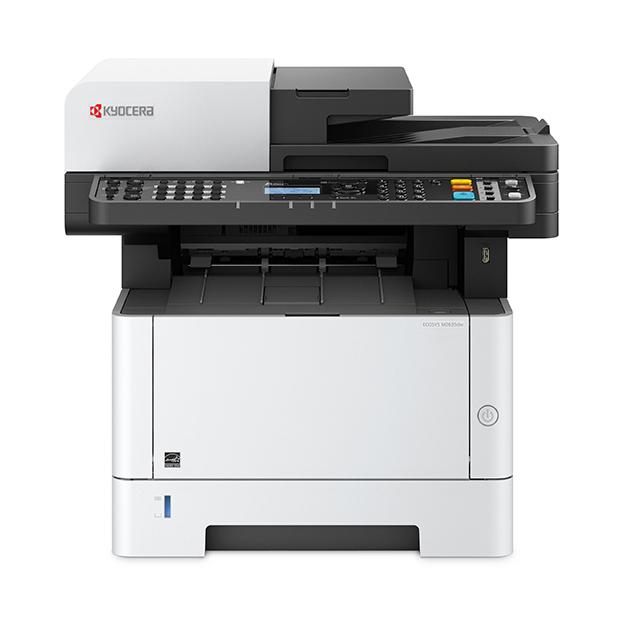May 5, 2025
How to Choose the Right Business Machine for Your Workplace
In today's office, selecting the right business machines—from printers and scanners to copiers and fax machines—can significantly impact your operational efficiency and bottom line. This guide will help you navigate the complex landscape of business machines to find solutions that perfectly match your company's specific needs.
Assessing Your Business Needs
Before exploring specific machines, take time to evaluate your requirements:
Print Volume Analysis
- Low volume (under 500 pages/month): Small businesses or teams with minimal printing needs
- Medium volume (500-5,000 pages/month): Mid-sized offices with regular documentation requirements
- High volume (5,000+ pages/month): Large organizations or document-intensive operations
Document Management Requirements
- What types of documents do you regularly produce? (Marketing materials, invoices, reports, etc.)
- Do you need to scan and digitize paper documents frequently?
- Is colour printing essential or is black and white sufficient?
- What paper sizes do you commonly use? (Letter, legal, ledger, etc.)
Workflow Considerations
- How many employees will use the machine?
- Do you need remote printing capabilities?
- Is document security a significant concern?
- Do you require finishing options like stapling, folding, or hole punching?
Types of Business Machines: Features and Benefits
- Multifunction Printers (MFPs)
- Best for: Businesses looking to consolidate multiple functions into one device
- Key features to consider:
- Print, scan, copy, and fax capabilities
- Wired and wireless connectivity options
- Mobile printing compatibility
- Document feeder capacity and speed
- Cloud integration capabilities
- Security features
Cost considerations:
- Initial investment: $300-$5,000+ depending on capabilities
- Cost per page: 1-15 cents, varying by model and page type
- Maintenance requirements and warranty coverage
Dedicated Printers
- Best for: High-volume print environments with specialized requirements
- Types to consider:
- Laser printers: Fast, efficient, and ideal for text-heavy documents
- Inkjet printers: Better for graphics and colour accuracy
- Thermal printers: Specialized for receipts and labels
Key differentiators:
- Print resolution and quality
- Paper handling capacity and options
- Print speed (pages per minute)
- Duty cycle (monthly page volume rating)
- Energy efficiency
Document Scanners
- Best for: Businesses transitioning to digital document management
- Options to consider:
- Desktop scanners: Compact solutions for individual use
- Workgroup scanners: Higher capacity for departmental needs
- Production scanners: High-speed options for dedicated scanning operations
Important specifications:
- Scan resolution (DPI)
- Colour depth capabilities
- Speed (pages per minute)
- Automatic document feeder capacity
- Double-sided scanning capabilities
- OCR (Optical Character Recognition) features
Specialized Business Machines
- Wide-format printers: For architectural firms, engineering companies, or marketing departments
- Label printers: For shipping departments, retail operations, or inventory management
- Check printers/endorsers: For financial operations or accounting departments
- ID card printers: For security badges or membership cards
Connectivity and Integration
- Modern business machines should integrate seamlessly with your existing technology infrastructure:
- Network connectivity: Ethernet, Wi-Fi, or both
- Mobile compatibility: AirPrint, Google Cloud Print, dedicated apps
- Software integration: Compatibility with document management systems or accounting software
- Authentication methods: Card readers, PIN codes, or other security measures
Cost Analysis Beyond Purchase Price
- The initial purchase price is just one factor in the total cost of ownership:
- Consumables: Toner, ink, drums, and other replaceable components
- Maintenance contracts: Service agreements and emergency repair options
- Energy consumption: Operating costs and environmental impact
- Space requirements: Physical footprint in your office environment
- Training needs: Time investment for staff to learn new systems
Making the Right Decision: A Step-by-Step Approach
- Document your requirements in detail, considering both current and future needs
- Research available options
- Calculate total cost of ownership over 3-5 years, not just purchase price
- Consider lease vs. purchase options based on your financial situation
- Verify warranty terms and available service support
- Check compatibility with existing systems before finalizing any decision
Questions to Ask
- What is the recommended monthly duty cycle for this machine?
- What are the estimated costs per page for both colour and black & white?
- What is the expected lifespan of the machine with proper maintenance?
- How are service calls handled and what is the typical response time?
- What training resources are available for our team?
- Can the machine be upgraded as our needs evolve?
- What security features are included to protect sensitive information?
Selecting the right business machine requires balancing immediate costs against long-term operational benefits. By thoroughly assessing your needs, researching available options, and calculating total cost of ownership, you can make an informed decision that improves workplace efficiency while controlling expenses.
Remember that the cheapest option isn't always the most economical in the long run, nor is the most expensive necessarily the best fit for your specific requirements. Focus on finding the solution that best addresses your unique business needs and workflow patterns.
